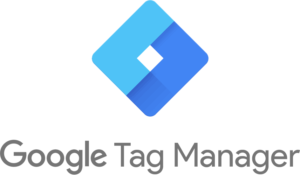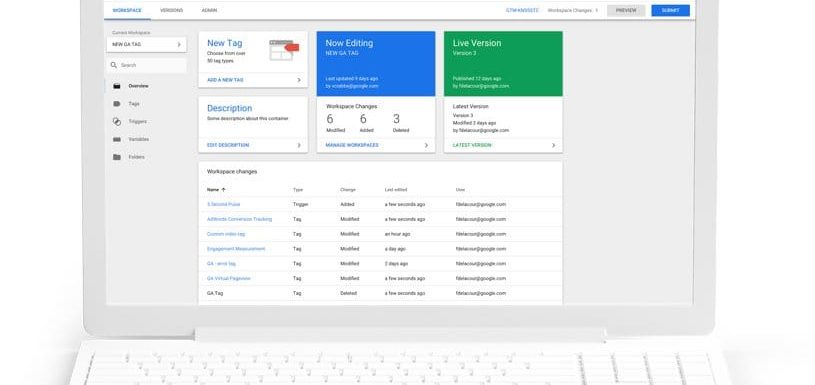A few years back I discovered Google Tag Manager (GTM) by chance because I was looking for a way to leverage Google Analytics in a more powerful way. Since taking a chance on the new tool, I’m convinced this is one of the better kept secrets of Google. Consider this my shouting from the mountain top to give you a preview and quick and dirty breakdown of tag manager.
This is not where I break down how to install and implement.
About Google Tag Manager
 First of all, it’s free – just like Google Analytics. So bonus points! Google Tag Manager gives you a single place to manage and target various “tags” from Google and third-party sources. Some of the more common sources include Facebook, AdWords, and so on. Once you get it up and running, you can be more agile and not require a programmer.
First of all, it’s free – just like Google Analytics. So bonus points! Google Tag Manager gives you a single place to manage and target various “tags” from Google and third-party sources. Some of the more common sources include Facebook, AdWords, and so on. Once you get it up and running, you can be more agile and not require a programmer.
Google Tag Manager is also not a reporting tool. It will help you put in the necessary “tags”, or pixels, to be able to report from various platforms.
Understanding the structure
So how does this work? Google Tag Manager has three parts that work together: tags, triggers, and variables. To explain how they work together, I’m going to reverse the order.
Variables
Tired of remembering every place you keep a number, piece of text, and so on? What about trying to remember your Facebook pixel ID? Variables store information for you that you don’t have to remember. You can just use the variable, and it will take care of the rest.
And we will go into greater detail, but just know you can create a variable that always stays the same or one that reads a bit of information from your website and can change on the fly – per user or per page.
Triggers
Triggers take place with something happens. Did someone click a button? Did someone visit a page? Did they press play on a YouTube video? Did they fill out a form? Did they download a PDF?
You get the idea. When someone takes an action, a trigger goes into effect. This is where you can really build on the data you capture on your website(s) to start building something better.
Tags
Tags happen when a trigger “fires” and can use variables to know what information to store. For example, you may want a Facebook Pixel show up on every page. For a campaign, you may build a landing page where you want to use a special Facebook Pixel with an event tag. You can use a trigger to know when someone is on the landing page and then tell Google Tag Manager to show that special Facebook Pixel tag.
Tags take many shapes and sizes. They can be advertising and targeting pixels. They can fire events for Google Analytics. They can even execute some custom HTML or images. You can probably dream it and make it happen.
And Google Tag Manager comes with several common third-party vendor tags already built in like Crazy Egg, LinkedIn Insights, AdRoll, etc.
What’s this mean for the digital marketer
Regardless of industry, Google Tag Manager puts a lot of power and flexibility at your fingertips. You can implement a single Google Tag Manager piece of code across multiple sites and domains and have full control what you want to track and where you want to track it. You can dive deeper into your consumer’s behaviors. When you start building better, actionable data, you will be able to make better decisions in your marketing and advertising to drive results.
What’s next
This is the first part in a many-part series where I’ll share lessons learned in Google Tag Manager plus tips to get more data out of your site. If you’re ready to install GTM in your site, go ahead and get started now!
